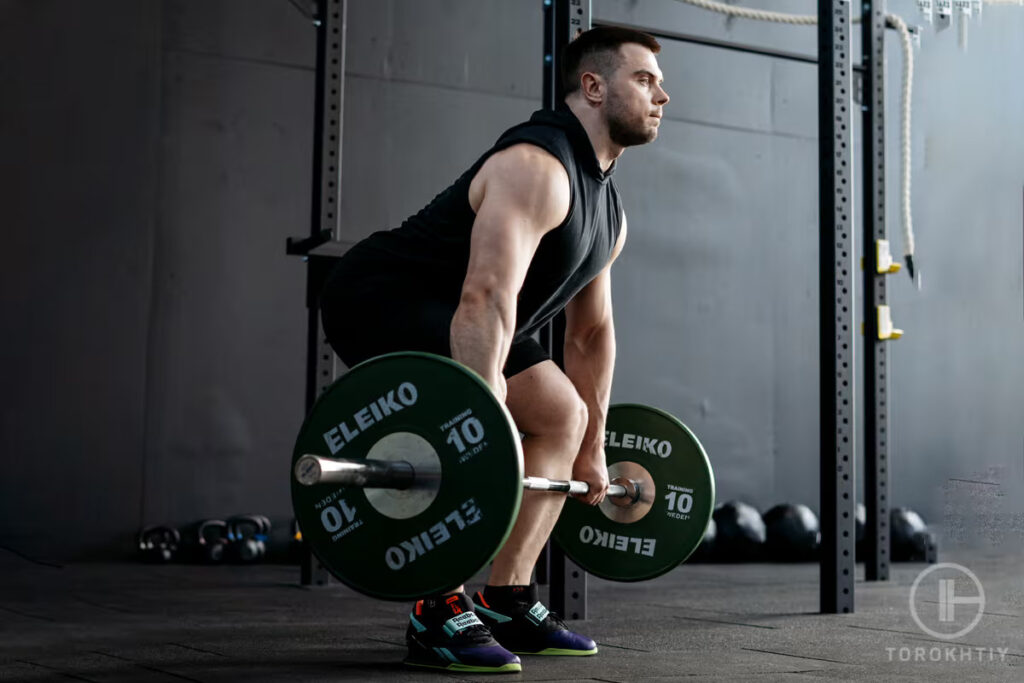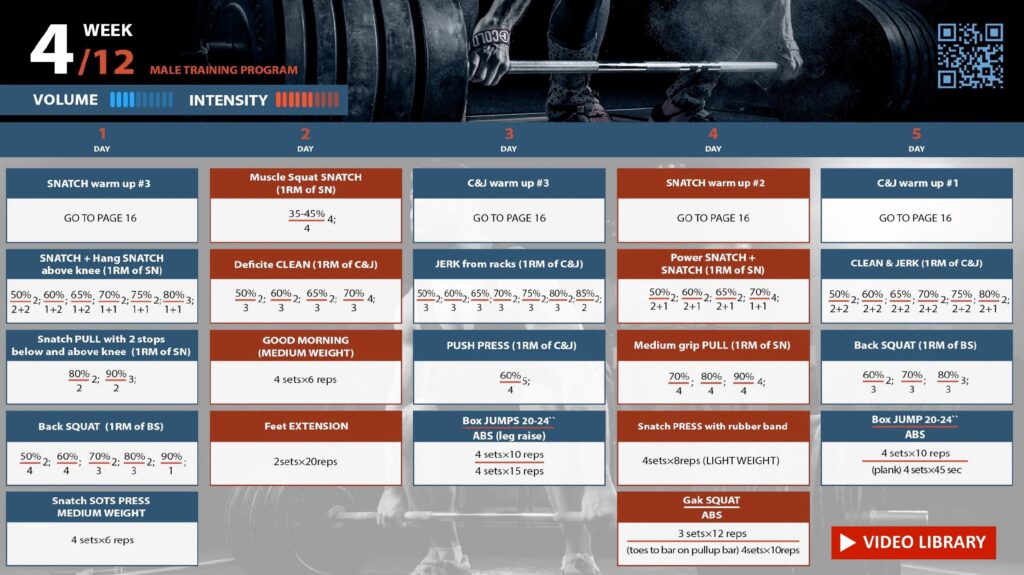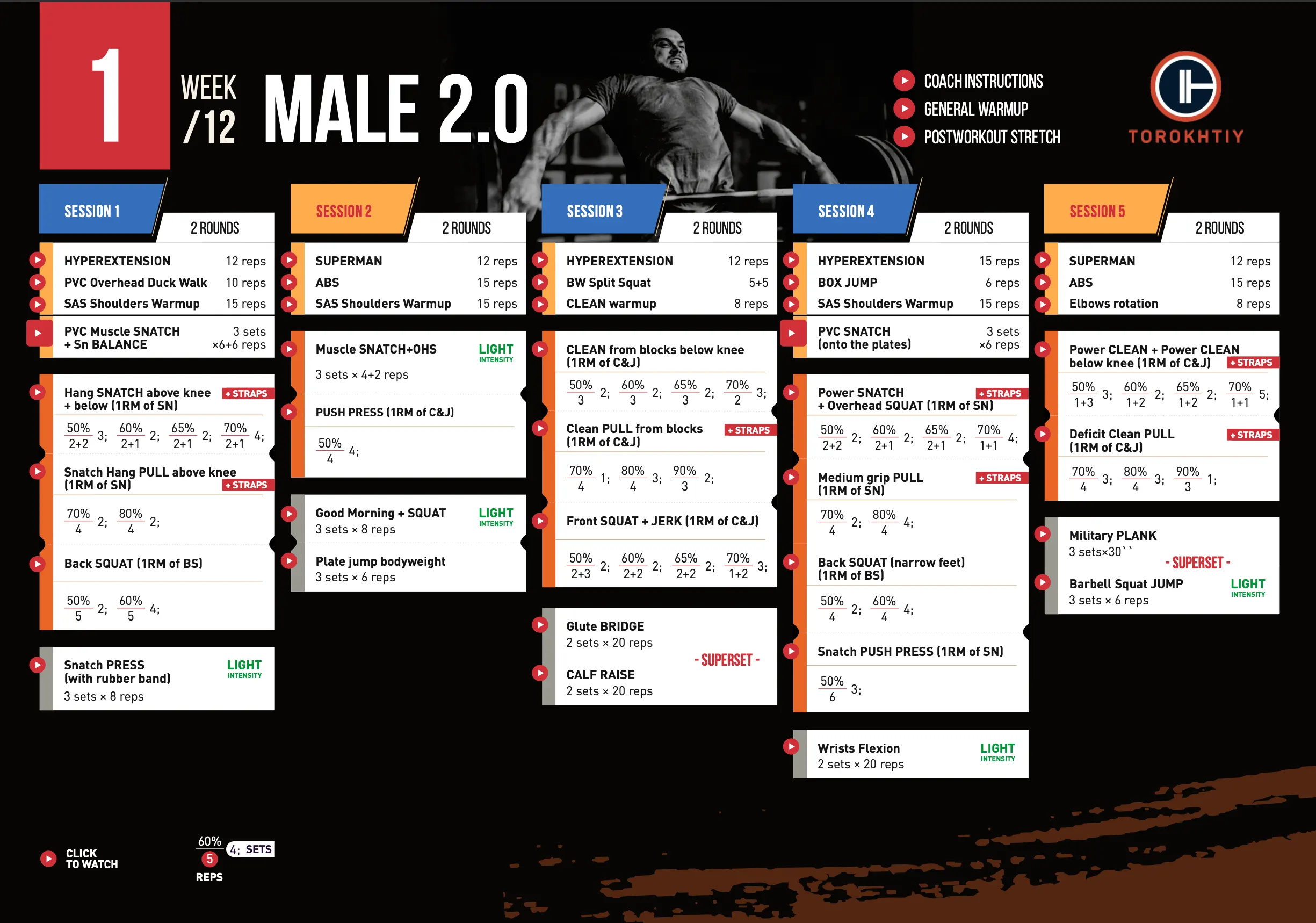5 Tips For Training Plan
Author:
Unlock your full potential by engaging with our experts and community! Have questions about your fitness journey or looking for expert advice on weightlifting techniques? Don’t hesitate — leave a comment below and Sergii Putsov will provide a personalized answer and insights to help you reach your goals.
Torokhtiy is reader-supported. Some links are affiliate links, and we may earn a commission at no extra cost to you. See our disclosure page for details.

The creation of a training program is a very interesting and complex occupation, requiring a large amount of diverse knowledge and experience from the trainer. The main task of the sports training program is with the help of such tools as volume, intensity, and principles of sports training, to bring the athlete at the peak of his possibilities by a certain date, and also systematically continue the growth of results for a long time without harm to his health. I am not a supporter of classes in style, “I came to a gym, it’s necessary to come up with something,” it is a bad method of training.
What should one know before planning a program?
The more information we get about the person who wants to train, the more individualized his training will be. Everything is important: health status, the general level of physical preparedness, previous experience of sports or fitness. In our personal programs, we gather a lot of information about athletes. It is obvious, a person who is “out of shape” will have to spend more time working with low intensity and more volume (such as working with a PVC) than someone who is in good shape and has a lot of weightlifting experience.
Follow us!

Free!
Get a 2-week Weightlifting Program as a bonus for the subscription to kickstart your training plan!

Free!
Attention to flexibility and mobility
The next important part is testing the athlete for mobility and flexibility. The squat test with PVC overhead quickly gives answers to all questions, but sometimes there are cases when athletes do not know how to do a back squat with a bar or pull with a bent back. The lower the level of mobility and flexibility of the athlete, the more time it is necessary to devote to this issue. Stretching before training should be short and dynamic to improve the elasticity of muscles, ligaments and increase joint mobility. The best time for full work on flexibility is at the end of training and in separately allocated “recovery training”. Such training can include a large amount of static and breathing relaxation exercises.
Sequence and variability
The general training program for your entire gym is an excellent and correct solution. Such a program should have averaged parameters and be accessible to most people. It saves time on writing very much and gives more opportunities to work with athletes. If necessary, the general training program can always be scaled and adjusted to the individual needs of a particular athlete.
You may like it:
- Detailed Olympic Weightlifting Program For Beginners
- 12-Week Weightlifting Program For Women (Detailed Example)
- Create Your Olympic Weightlifting Program (Examples Included)
The program for beginners should be variable. Since the main task of the beginner is practicing the techniques, there should be more exercises in his training. That doesn’t mean they should stay in the gym longer than everyone else. In fact, a great program for beginners can be performed in 60-75 minutes. The more exercises, the more they perform different movements, which improve their understanding of weightlifting and the feeling of their own body.

A classic programming rule: a day of snatch exercises, a day of clean & jerk exercises, then a mixed day. Such alternation helps the athlete to focus on each exercise, as well as their variations. This helps to avoid monotony.
Traditionally, training begins with the most difficult exercise. According to the plan, there is the most technically difficult exercise after a full and high-quality warm-up. It definitely makes sense, as the snatch and clean & jerk have the greatest impact on the nervous system. So first, the snatch is planned and then back squat, and the jerk should always be performed before a pull for the same reason. Again, we are now talking about a classic basic view of programming and do not emphasize the school of any particular country. Training against a background of fatigue may take place, but we will stay out of it yet.
After training in dynamic speed and power mode, it is necessary to work with auxiliary exercises such as pull, squat and press. These exercises also help to practice technical elements, but their main task is to increase the strength and power of the athlete.
Important details
Plyometrics and jumping work are an obligatory part of the athlete’s training program. They can be performed both at the end of the workout to “kill” the legs and at the beginning to activate the muscles. In any case, jumping very well improves intermuscular coordination and helps the athlete to interact with the bar more qualitatively.
An important part of the program is strengthening the torso muscles. Under the term ‘torso muscles’, not only abdominal muscles are meant.
It is necessary to work out small muscles of the lower back, muscles of the upper torso (muscles of chest and blade), abdominal muscles. This will help the athlete to maintain stability and overall balance during the snatch and clean & jerk.
The most important day in the training program
The rest day is the most important one in training, and it is important to live it properly. I`m not a supporter of the 3+1 or 5+2 scheme, given that everyone may have a different look of his week, and everyone has a life outside of the training process: work, study, family. But since we all live on a seven-day schedule, I try to distribute the number of our weekends evenly and based on tasks and preparation period. I do not plan two days off in a row.
One of the important principles of sports training is a rational alternation of work and rest mode. The athlete should be ready for heavy work, so it is right to plan big workouts either after a day of rest or after an easy training. Performing heavy loads against the background of fatigue is a very dangerous method: not everyone needs it, not all will withstand it.

This is an example of a training week in the preparatory period in my men’s training program. This pattern should not be repeated every week. This is a clear example of what I wrote above.
The snatch and clean & jerk are competitive weightlifting exercises. Those who have performed or tried to learn to perform them are well aware of how it is not easy. Perhaps that’s why the snatch and clean & jerk are the only two exercises that are a part of the weightlifting competition program at the Olympics. It is believed that these exercises can no longer be improved. But it is not: 40 years ago the technique was quite different. Weightlifting continues its evolution. And once you learn to perform these exercises, the next stage that will be in front of you is how to make the technique better and lift more. This is the very moment when planning a training program becomes important.
Train Together – Train Right!
You might be interested in:
Why Trust Us?
With over 20 years in Olympic weightlifting, strength training, nutrition coaching, and general fitness our team does its best to provide the audience with ultimate support and meet the needs and requirements of advanced athletes and professional lifters, as well as people who strive to open new opportunities and develop their physical capabilities with us.
By trusting the recommendations of our certified experts in coaching, nutrition, and sports training programming, as well as scientific consultants, and physiotherapists, we provide you with thorough, well-considered, and scientifically proven content. All the information given in the articles concerning workout programming, separate exercises, and athletic performance, in general, is based on verified data.
The product testing process is described in more detail here.
Author: Sergii Putsov
Head of Sport Science, PhD
Best Results: Snatch – 165 kg,
C&J – 200 kg
Sergii Putsov, Ph.D., is a former professional weightlifter and National team member, achieving multiple medals in the 94 kg weight category at national competitions. With a Master’s degree in “Olympic & Professional Sport Training” and a Sport Science Ph.D. from the International Olympic Academy, Greece, Sergii now leads as the Head of Sport Science. He specializes in designing training programs, writing insightful blog articles, providing live commentary at international weightlifting events, and conducting educational seminars worldwide alongside Olympic weightlifting expert Oleksiy Torokhtiy.




Still have questions after reading our article? Unlock your full potential by engaging with our experts and community! Don’t hesitate — leave a comment below and Sergii Putsov will provide a personalized answer and insights to help you reach your goals.